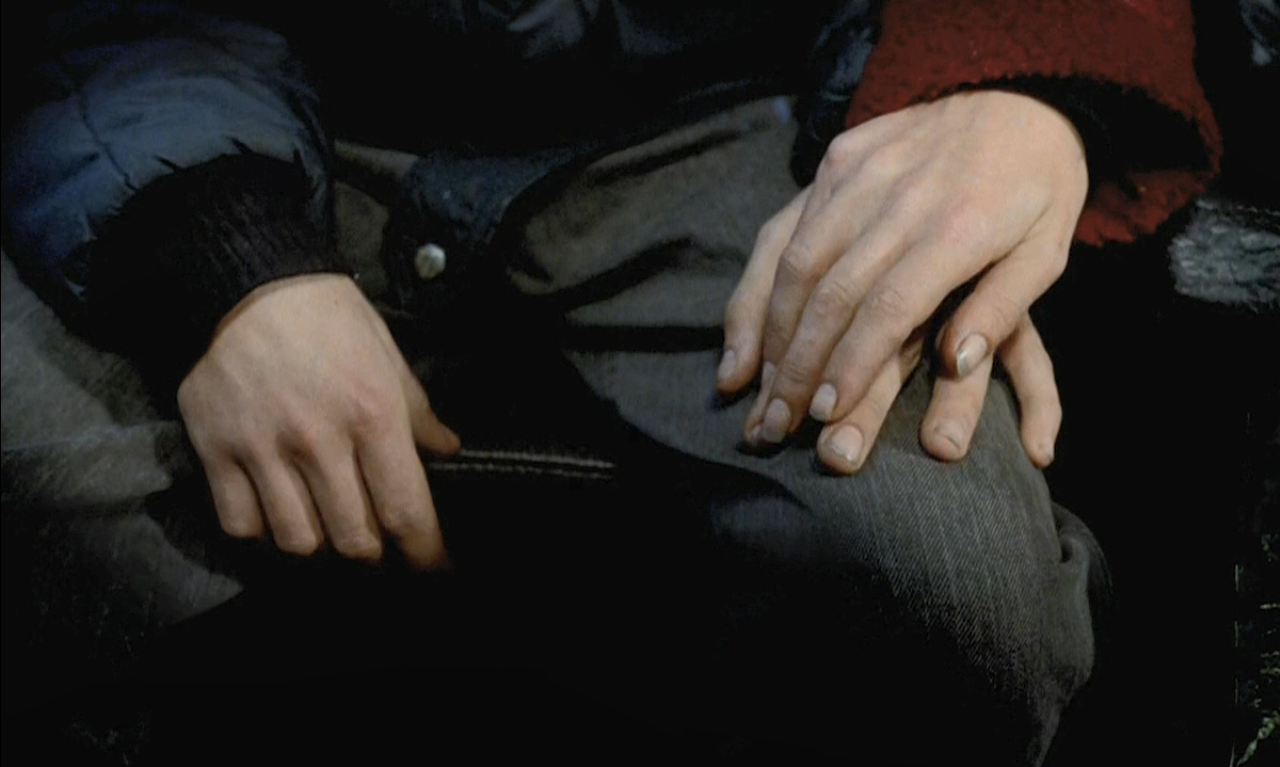
Pedro Costa's filmography is best understood in the context of his fascination with the district of Fontainhas, a poor, now-demolished quarter of Lisbon. After getting to know the people that resided there, people that were overlooked by most of the world, he set out to make films about them - their communities, daily lives, and the implicit problems they face being “ghosts” of their country. His filmography is a an evolving effort to record and present life in Fontainhas while being aware of the outside perspective he brings to their environment, as well as the moral implications of presenting the footage to audiences. While he infuses his films with ideas like companionship, displacement, racism, and the inner life of his subjects, it’s important to note that these are not films about poverty, they are films with the background of poverty. These aren’t “big issue” films. Each film released from Ossos onwards has a new method of capturing and presenting his subjects and location.
Ossos, the first film in the informal “Fontainhas trilogy”, is then best approached as coming from a director trying to feel out the best possible way to explore a new interest - its filmic conventions are ultimately at odds with his eventual ethos, yet it’s still promising and a hint of what was to come. Particularly telling of his future talent is the emergence of a visual style that pretty much every single writeup of any of Costa’s Fontainhas films calls “painterly”, and with good reason. The natural lighting and lived-in areas of Fontainhas are paired with characteristically innovative framing and compositions in a way that rarely feels intrusive - shocking, considering this was the first (and last) Fontainhas film Costa tried to shoot with a full film crew and equipment (not the best approach to use in a cramped, tiny town).
The plot - a guy has to find out what to do with his kid after its mother tries to gas herself and the child - is bare and chock-full of ellipses that not only make the film about as minimalist a film with a “plot” could possibly be, but also make it needlessly complicated to understand. These scenes-between-scenes are full of awkward silence and carry very little weight because the plot is so weightless to begin with. There is no in-between action to infer from these random, vague scenes, so it seems their only purpose is to try to create a false sense of realism in drilling the mundanity and hopelessness of the residents of Fontainhas in our brains (while, even worse, using real residents to act this out). In fact, on my second watch of Ossos the film made more narrative sense, but not in a way that felt illuminating. It’s just austere to be austere, and reality is never really as austere as European art-house films want you to think. Put another way, just because your film is full of silence and sudden brutality doesn’t mean anything you’re trying to say in it is applicable to real life, but before I get off topic and hate myself any more for thinking Michael Haneke was the greatest director ever, let’s move on.
If viewed as the first stage of a work-in-progress effort to try to capture a community, Ossos isn’t really as bad as I’m making it seem. It’s needlessly difficult, yes, but Colossal Youth, which centers on the aftermath of Fontainhas being destroyed, would be infinitely less impactful without seeing what the place used to be. What is shown in Ossos when the plot isn’t trying to get in the way - dance parties, friendships, care, compassion, and overall, a town in stark contrast to the factions of In Vanda’s Room and eventually the destruction and emptiness in Colossal Youth - is sometimes touching and doesn’t smack of the harshness of Costa’s form. It’s a shame that in trying to rework perceptions of the disadvantaged that he relies on so many exaggerated dramatics to try to show this companionship. Ossos also explicitly addresses Fontainhas’ invisibility in a scene where main character Nuno is splayed out on a hospital floor while dozens of nurses walk around him as if he wasn’t there. Costa thankfully realized that the best way to show justice to Portugal’s underprivileged isn’t to place, yknow, actual poor people in constructed situations designed to condemn those who look down on them, but rather, it’s to show their everyday lives.
Evidently, Ossos’ way of trying to find realism in a made-up plot just doesn’t jive - later films would make evident how Costa began to see that imposing a self-written narrative was an inherently exploitative way of exploring the community. Taken in tandem with the literal imposition of his film crew on the town, it’s no wonder he eventually decided to take just a digital camera to Fontainhas - no script in hand — for In Vanda’s Room, a docufiction that is committed to reality without “using” its subjects, and a film that has very much helped elucidate all of the problems I have with Ossos.
Costa’s ethos might seem extremely strict for a filmmaker, but it’s one of the reasons I admire his work. Instead of trying to create art within the predefined boundaries of a narrative and relationship between a director and his subject(s), he invented his own. Any filmmaker that is passionate about the margins of society has a lot to learn from him.